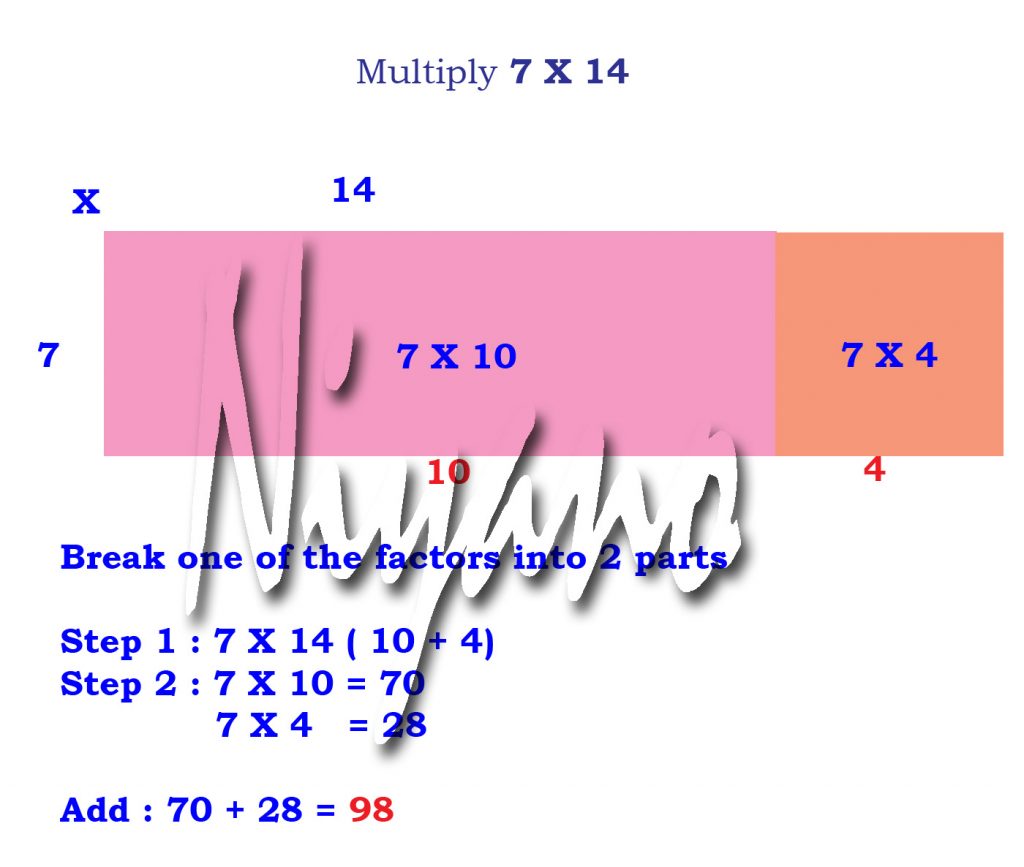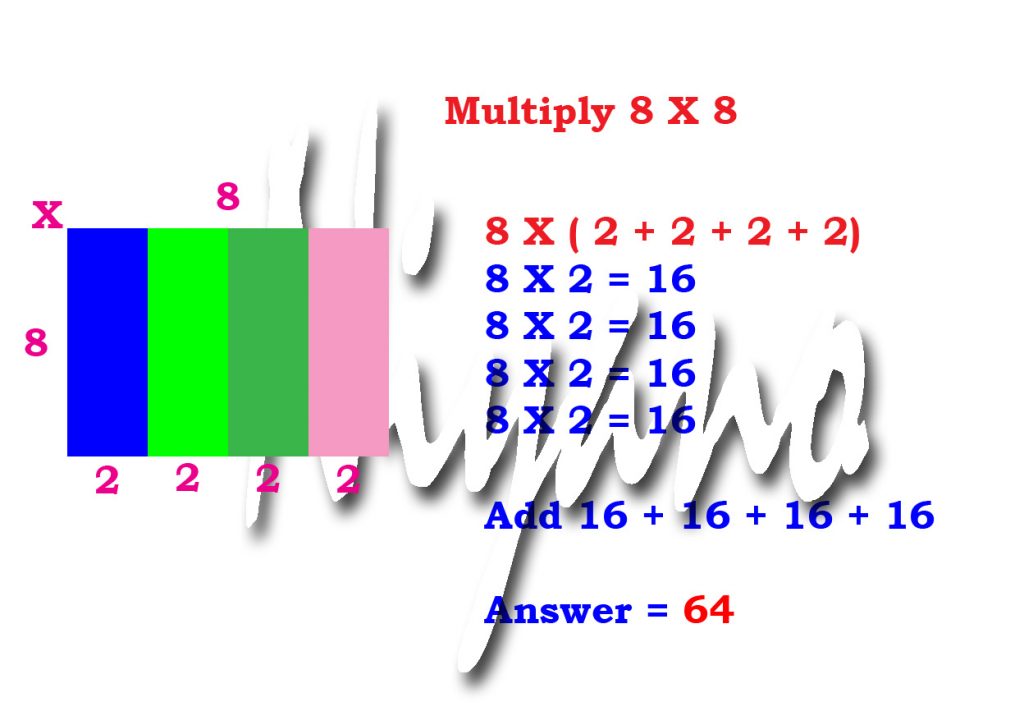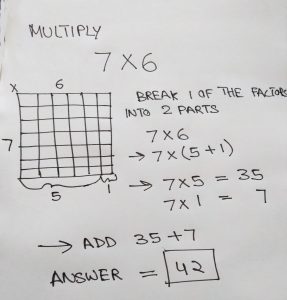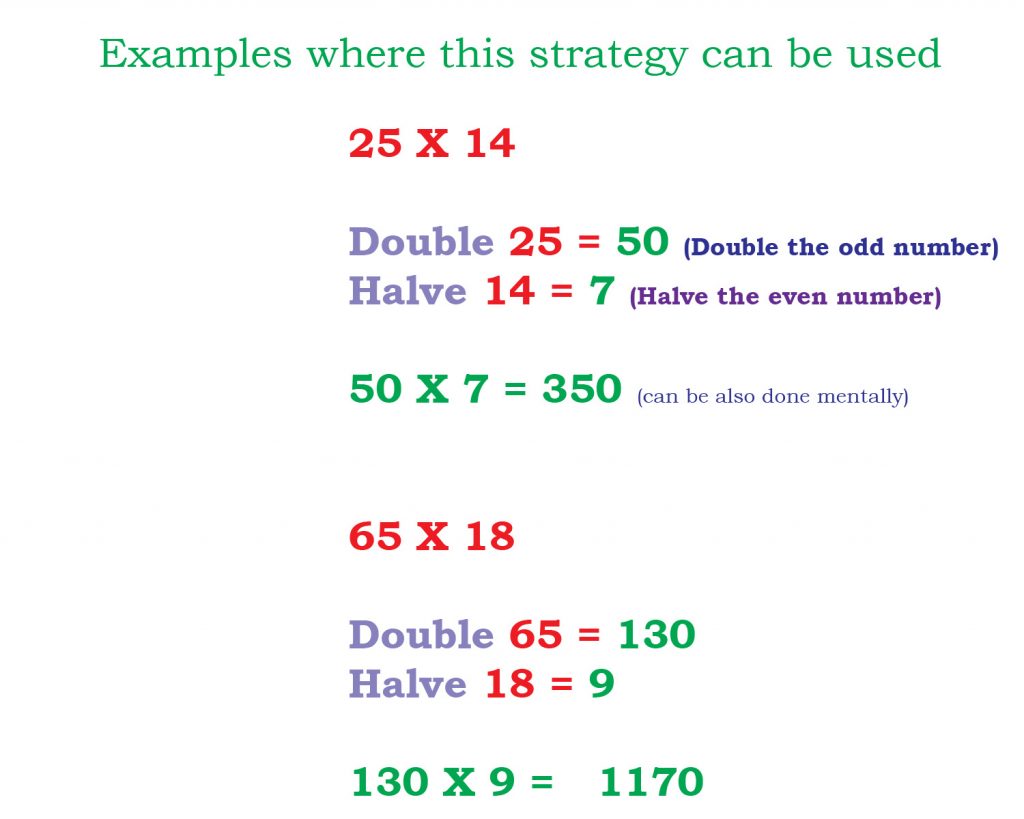Multiplication Strategies
A quick look at the grade 2 lesson on introduction to multiplication
Taming the tables – Tips to introduce multiplication
While multiplying always remember :
An even number x an even number = an even number
An odd number x an even number = an even number
An odd number x an odd number = an odd number
Distributive property of multiplication
Kids can break apart one of the factors into “easy” addends. I usually advise making one of the addends a 2, 5, or 10 since these are usually easier to compute or are already memorized. This method is using the distributive property.Here are some examples:
Scenario 1
Scenario 2
Scenario 3
Doubling and Halving
When to use :
- When a problem has one even and one odd factor (or two even factors).
- Remember to Double the odd factor and halve the even factor.
- It’s very useful when the odd factor has a ‘5’in the ones place. because 5 doubled is 10, which is a very easy number to workout mentally
Some videos that I have created to show more multiplication strategies
Scenario 1 : Breaking factors by PLACE VALUE
Scenario 2 : BOWTIE Method
Scenario 3 : First Out In Last (FOIL) method
F = First (multiply the first two numbers in each set of numbers); O = Out (multiply the two outside numbers); I = In (multiply the two inside numbers); and L = Last (multiply the last two digits, which are the ones).
Scenario 4 : Lattice method
This method is very helpful when multiplying larger numbers such as those with 2 or more digits. It needs a little practice but very helpful with accurate results.
This method can be divided into 4 steps :
Step 1 :
Make a table according to the problem given
Eg. For 456 X 32 ; make a table with 3 rows and 2 columns.
For 23 X 44 ; make a table with 2 rows and 2 columns
Step 2 :
Divide all the boxes into 2 parts diagonally ( you will understand it better after watching the video)
Step 3 :
Start mulktiplying from the top row. Tens comes in the top part of the column and ones in the bottom. If there is no value for tens then write ‘0’
Step 4 :
Add the numbers diagonally. And you have the answer 🙂






